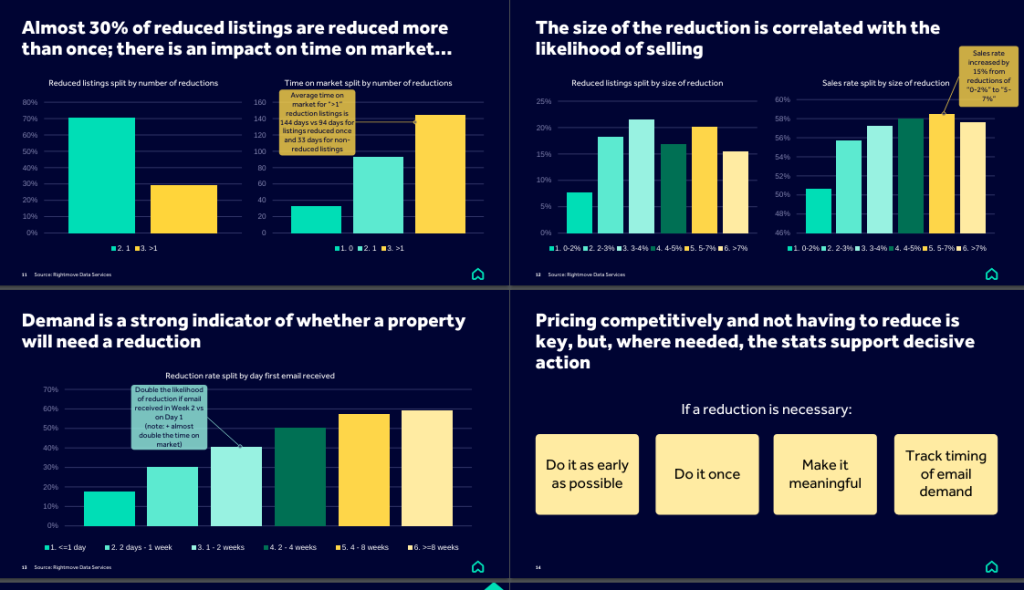The Art of Price Repositioning in Real Estate: Striking the Right Balance
In the dynamic world of real estate, setting the right price for a property is crucial. However, even the most meticulously chosen price can sometimes miss the mark. This is where price repositioning—a strategic adjustment of a property’s asking price—comes into play. The data suggests that not only is the act of repositioning important but also the timing and extent of the reduction are critical factors in achieving the best possible outcome.
The Importance of Price Repositioning
In a competitive market, a property that remains unsold for an extended period can lose its appeal. Buyers may assume that a home lingering on the market has underlying issues, even if the only issue is the price. This perception can lead to fewer showings and offers, prolonging the sale process. Price repositioning helps to reinvigorate a listing, making it more attractive and competitive in the eyes of potential buyers.
Timing Is Everything
The data indicates that the timing of a price reduction significantly impacts the final sale price and the time a property spends on the market. A well-timed price adjustment can reignite interest and generate renewed attention from buyers. Ideally, if a property is not receiving adequate interest within the first few weeks, it may be time to consider a price adjustment. Acting swiftly can prevent the listing from becoming stale, thus maintaining a positive market perception.
The Right Amount: Neither Too Little Nor Too Much
When it comes to how much to adjust the price, precision is key. A reduction that is too small may not attract the desired level of interest or change buyer perception, while a cut that is too large can result in leaving money on the table. The data shows that an optimal price reduction should be significant enough to realign the property with current market expectations but not so drastic that it erodes the seller’s equity unnecessarily.
Balancing Act: The Best Outcome
Ultimately, the goal of price repositioning is to find the sweet spot where the property is competitively priced, attracting serious buyers and offers. This not only helps in securing a fair market price but also in reducing the time the property remains on the market, creating a win-win situation for both sellers and buyers.
Conclusion
Price repositioning is a strategic tool in real estate sales that requires careful consideration and a nuanced approach. The timing and amount of the price reduction play pivotal roles in ensuring that the property sells at the best possible price and within a reasonable timeframe. Sellers and agents must work closely, analysing market data and buyer feedback, to make informed decisions about when and how much to adjust the asking price.
In an ever-evolving market, staying responsive and adaptable can make all the difference in achieving a successful sale.




Call Daniel at Daniel James residential Oswestry to find out more
Tel: 01691 674494






